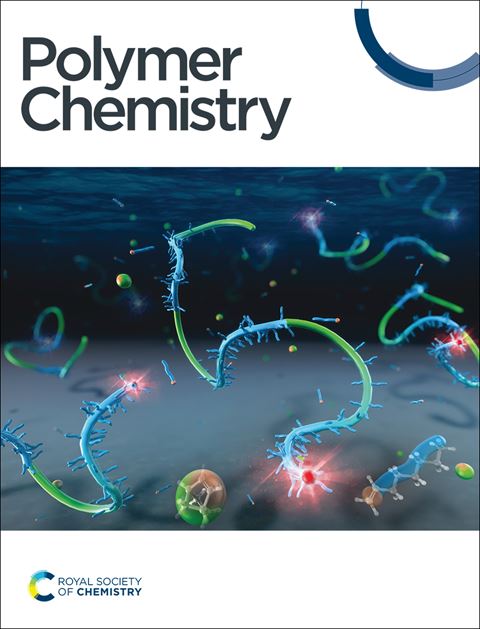吡啶-亚胺型Ni(II)和Pd(II)催化剂轴取代基协同效应对乙烯(Co)聚合链转移的抑制作用
IF 3.9
2区 化学
Q2 POLYMER SCIENCE
引用次数: 0
摘要
控制链转移反应是吡啶-亚胺镍和钯催化乙烯(co)聚合的基本挑战。我们提出了一种突破性的双轴取代基策略,协同抑制链转移,使高分子量聚乙烯和极性功能化共聚物的高效生产成为可能。合成了一类具有8-苄基和2二芳基甲基萘基吡啶亚胺配体的镍钯配合物,并对其进行了表征。由二乙基氯化铝活化的镍催化剂表现出中等的活性(~10 5 g mol⁻¹h⁻),同时产生高分子量的支链聚乙烯(Mn高达246.4 kg/mol)——比单取代基控制系统高一个数量级。值得注意的是,类似的钯催化剂生成的超支化聚乙烯的M高达43.8 kg/mol。这些系统在共聚过程中进一步实现了出色的丙烯酸甲酯掺入(高达13 mol%),同时保持实际分子量(4.1-8.4 kg/mol)。机理研究表明,双取代基对两个轴位的协同屏蔽阻止了活性中间体的位移,而柔性的8benzhyylnaphthyl片段通过促进乙烯配位,使活性比刚性类似物提高了5-7倍。本工作建立了抑制后过渡金属聚合催化链转移的新设计原则。本文章由计算机程序翻译,如有差异,请以英文原文为准。
Enhanced Suppression of Chain Transfer in Ethylene (Co)Polymerization via Synergistic Axial Substituent Effects in Pyridine-Imine Ni(II) and Pd(II) Catalysts
Controlling chain-transfer reactions represents a fundamental challenge in pyridine-imine nickel and palladium catalyzed ethylene (co)polymerization. We present a breakthrough dualaxial-substituent strategy that synergistically suppresses chain transfer, enabling efficient production of high-molecular-weight polyethylenes and polar functionalized copolymers. A family of well-defined nickel and palladium complexes featuring both 8-benzhydryl and 2diarylmethyl naphthylpyridine-iminate ligands were synthesized and thoroughly characterized.The nickel catalysts, activated by diethylaluminum chloride, showed moderate activities (~10⁵ g mol⁻¹ h⁻¹) while producing branched polyethylene with high molecular weights (Mn up to 246.4 kg/mol) -an order of magnitude higher than single-substituent control systems.Remarkably, analogous palladium catalysts generated hyperbranched polyethylenes with M up to 43.8 kg/mol. These systems further achieved outstanding methyl acrylate incorporation (up to 13 mol%) in copolymerizations while maintaining practical molecular weights (4.1-8.4 kg/mol). Mechanistic studies reveal that cooperative shielding of both axial sites by the dual substituents prevents displacement of active intermediates, while the flexible 8benzhydrylnaphthyl moiety enhances activity 5-7-fold compared to rigid analogues by facilitating ethylene coordination. This work establishes new design principles for chaintransfer suppression in late-transition-metal polymerization catalysis.
求助全文
通过发布文献求助,成功后即可免费获取论文全文。
去求助
来源期刊

Polymer Chemistry
POLYMER SCIENCE-
CiteScore
8.60
自引率
8.70%
发文量
535
审稿时长
1.7 months
期刊介绍:
Polymer Chemistry welcomes submissions in all areas of polymer science that have a strong focus on macromolecular chemistry. Manuscripts may cover a broad range of fields, yet no direct application focus is required.
 求助内容:
求助内容: 应助结果提醒方式:
应助结果提醒方式:


